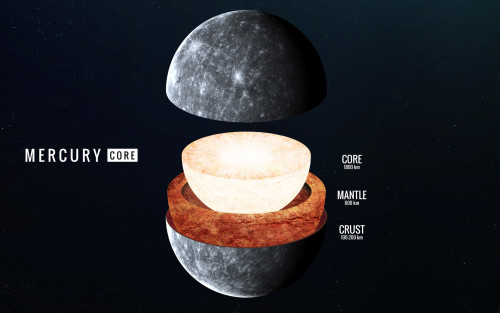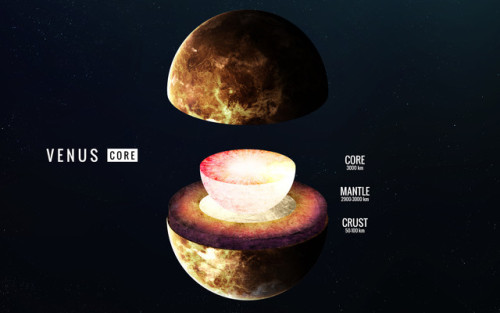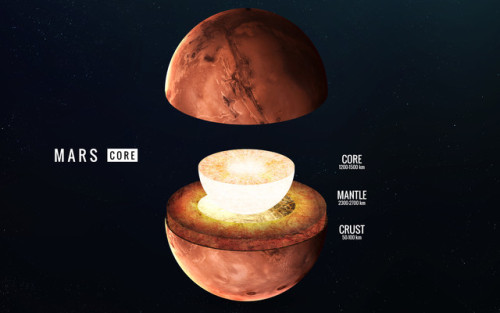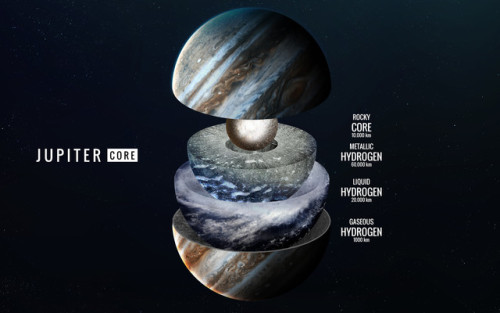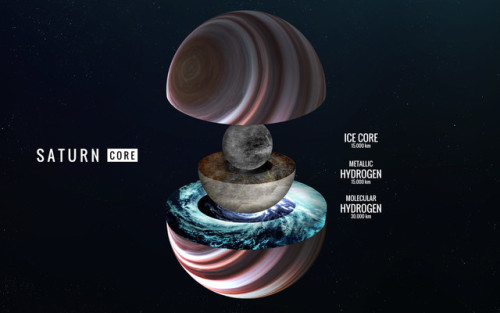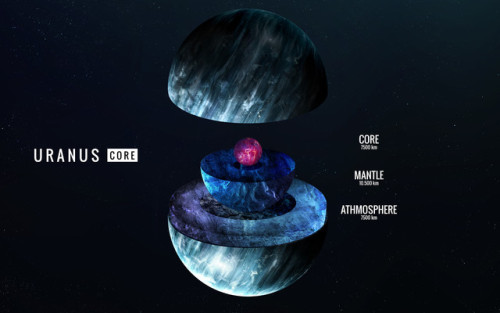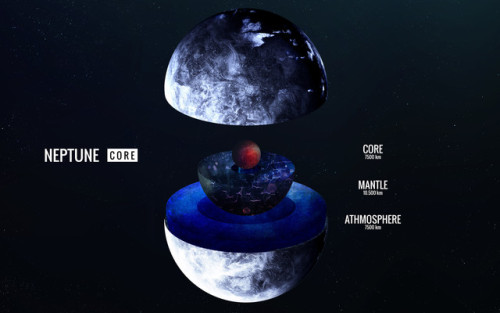I Found A Bizarre Open-access, Peer-review Journal Of STEM Research. It Was Hard For Me To Find Anything
I found a bizarre open-access, peer-review journal of STEM research. It was hard for me to find anything that pertained to astronomy or any of the stellar studies, but I did find a couple categories I could investigate:
Astrobiology
Astronomical Sciences
Spectroscopy (I didn’t see any astronomical spectroscopy stuff but who knows)
Just looking at the articles popping up suggests that it would take some serious digging to find anything (and I would certainly have to work on my keyword optimization techniques because typing ‘space’ into the search bar got me nothing relevant to my interests), but it’s a new potential resource! And for anyone who wants to find a way to publish in STEM fields, maybe it’s something worth checking out?
More Posts from Fillthevoid-with-space and Others

February is Black History Month, and it’s been the perfect excuse to research all of the African-American people who have contributed to space research and exploration! I talk about seven astronomers and nine astronauts who have delved into outer space because it was just so dang amazing, nothing could stop them from learning about it; astrophiles, if you will. Space-lovers.
Below the cut, I have the transcript, sources, music credits, and timeline of people I talked about! Maybe you have something you want to hear me talk about that’s related to space. I’m kind of set for topics for the next few months but I’ll take suggestions here or you can tweet at me on Twitter at @HDandtheVoid, or you can ask me to my face if you know me. Please subscribe on iTunes, rate my humble podcast and maybe review it, and tell friends if you think they’d like to hear it!
(My thoughts on the next episode are the SOFIA observatory, Chuck Yaeger, the transit of Venus, or quasars and blasars. The next episode will go up March 19th, unfortunately; I have a work retreat the day I’d usually post and I don’t trust the wifi out there. See you then!)
Script/Transcript
Timeline
Benjamin Banneker, American (1731-1806)
Dorothy Vaughan, American (1910-2008)
Katherine Johnson, American (1918- )
Mary Jackson, American (1921-2005)
Ed Dwight, American (1933- )
Robert Henry Lawrence, American (1935-1967)
Doctor Arthur Bertram Cuthbert Walker II, American (1936-2001)
Frederick Gregory, American (1941- )
Guion "Guy" Bluford, American (1942- )
Doctor Ronald E. McNair, American (1950-1986)
Ilan Ramon, Israeli, American (1954-2003)
Doctor Bernard Harris, Jr., American (1956- )
Doctor Mae Jemison, American (1956- )
Neil DeGrasse Tyson, American (1958- )
Michael P. Anderson, American (1959-2003)
Leland Melvin, American (1964- )
Doctor Beth A. Brown, American (1969-2008)
Sources
African Americans in Astronomy and Space via ThoughtCo (Mar 2017)
Benjamin Banneker via Encyclopedia Britannica
Benjamin Banneker via PBS
Benjamin Banneker via America’s Library
Benjamin Banneker via Brookhaven National Laboratory
Hidden Figures (2016)
Katherine Johnson via NASA
Mary Jackson via NASA
Dorothy Vaughan via NASA
Doctor Arthur Bertram Cuthbert Walker II via Encyclopedia Britannica
Doctor Arthur Bertram Cuthbert Walker II obituary via the American Astronomical Society
Ed Dwight via The History Makers
Robert Henry Lawrence via Black Past
Robert Henry Lawrence via PBS
Robert Henry Lawrence via Hill Air Force Base
Guion "Guy" Bluford via Space.com (Feb 2017)
Guion Bluford: “I mean, I laughed and giggled all the way up. It was such a fun ride.”
Guion "Guy" Bluford via NASA
Guion "Guy" Bluford via Encyclopedia Britannica
Doctor Ronald E. McNair via NASA
Doctor Ronald E. McNair via Black Past
Doctor Ronald E. McNair via New Jersey Institute of Technology
Frederick “Fred” Gregory via NASA
Frederick “Fred” Gregory via Black Past
The Harris Foundation website
“empower individuals, in particular minorities and others who are economically and/or socially disadvantaged, to recognize their potential and pursue their dreams.”
Doctor Mae Jemison via NASA
Doctor Mae Jemison via NASA
Doctor Mae Jemison via the U.S. National Library of Medicine
Mae Jemison: “I followed the Gemini, the Mercury, and the Apollo programs, I had books about them and I always assumed I would go into space. Not necessarily as an astronaut; I thought because we were on the moon when I was 11 or 12 years old, that we would be going to Mars—I'd be going to work on Mars as a scientist. And that's despite the fact that there were no women, and it was all white males—and in fact, I thought that was one of the dumbest things in the world, because I used to always worry, believe it or not as a little girl, I was like: What would aliens think of humans? You know, these are the only humans?”
Michael P. Anderson via NASA
Michael P. Anderson via Black Past
Ilan Ramon via NASA
Leland Melvin via Space.com (Nov 2017)
Leland Melvin as Makers Men via Space.com (May 2017)
Leland Melvin via NASA
Leland Melvin via Pioneer Works
Doctor Beth A. Brown via the American Physical Society
Doctor Beth A. Brown via the American Astronomical Society
Doctor Beth A. Brown via NASA
Neil DeGrasse Tyson via Hayden Planetarium
Neil DeGrasse Tyson via the New Yorker
StarTalk Radio via Apple Podcasts
Intro Music: ‘Better Times Will Come’ by No Luck Club off their album Prosperity
Filler Music: ‘Dorothy Dandridge Eyes (feat. Esperanza Spalding)’ by Janelle Monáe off her album The Electric Lady.
Outro Music: ‘Fields of Russia’ by Mutefish off their album On Draught
Why Webb Needs to Chill
Our massive James Webb Space Telescope is currently being tested to make sure it can work perfectly at incredibly cold temperatures when it’s in deep space.
How cold is it getting and why? Here’s the whole scoop…
Webb is a giant infrared space telescope that we are currently building. It was designed to see things that other telescopes, even the amazing Hubble Space Telescope, can’t see.

Webb’s giant 6.5-meter diameter primary mirror is part of what gives it superior vision, and it’s coated in gold to optimize it for seeing infrared light.

Why do we want to see infrared light?
Lots of stuff in space emits infrared light, so being able to observe it gives us another tool for understanding the universe. For example, sometimes dust obscures the light from objects we want to study – but if we can see the heat they are emitting, we can still “see” the objects to study them.
It’s like if you were to stick your arm inside a garbage bag. You might not be able to see your arm with your eyes – but if you had an infrared camera, it could see the heat of your arm right through the cooler plastic bag.

Credit: NASA/IPAC
With a powerful infrared space telescope, we can see stars and planets forming inside clouds of dust and gas.

We can also see the very first stars and galaxies that formed in the early universe. These objects are so far away that…well, we haven’t actually been able to see them yet. Also, their light has been shifted from visible light to infrared because the universe is expanding, and as the distances between the galaxies stretch, the light from them also stretches towards redder wavelengths.
We call this phenomena “redshift.” This means that for us, these objects can be quite dim at visible wavelengths, but bright at infrared ones. With a powerful enough infrared telescope, we can see these never-before-seen objects.

We can also study the atmospheres of planets orbiting other stars. Many of the elements and molecules we want to study in planetary atmospheres have characteristic signatures in the infrared.

Because infrared light comes from objects that are warm, in order to detect the super faint heat signals of things that are really, really far away, the telescope itself has to be very cold. How cold does the telescope have to be? Webb’s operating temperature is under 50K (or -370F/-223 C). As a comparison, water freezes at 273K (or 32 F/0 C).
How do we keep the telescope that cold?
Because there is no atmosphere in space, as long as you can keep something out of the Sun, it will get very cold. So Webb, as a whole, doesn’t need freezers or coolers - instead it has a giant sunshield that keeps it in the shade. (We do have one instrument on Webb that does have a cryocooler because it needs to operate at 7K.)

Also, we have to be careful that no nearby bright things can shine into the telescope – Webb is so sensitive to faint infrared light, that bright light could essentially blind it. The sunshield is able to protect the telescope from the light and heat of the Earth and Moon, as well as the Sun.

Out at what we call the Second Lagrange point, where the telescope will orbit the Sun in line with the Earth, the sunshield is able to always block the light from bright objects like the Earth, Sun and Moon.

How do we make sure it all works in space?
By lots of testing on the ground before we launch it. Every piece of the telescope was designed to work at the cold temperatures it will operate at in space and was tested in simulated space conditions. The mirrors were tested at cryogenic temperatures after every phase of their manufacturing process.

The instruments went through multiple cryogenic tests at our Goddard Space Flight Center in Maryland.

Once the telescope (instruments and optics) was assembled, it even underwent a full end-to-end test in our Johnson Space Center’s giant cryogenic chamber, to ensure the whole system will work perfectly in space.

What’s next for Webb?
It will move to Northrop Grumman where it will be mated to the sunshield, as well as the spacecraft bus, which provides support functions like electrical power, attitude control, thermal control, communications, data handling and propulsion to the spacecraft.

Learn more about the James Webb Space Telescope HERE, or follow the mission on Facebook, Twitter and Instagram.
Make sure to follow us on Tumblr for your regular dose of space: http://nasa.tumblr.com.
It’s way too late for this, but it’s important to note that NASA didn’t discover the new earth-like planets. It was a group of astronomers lead by a dude name Michaël Gillon from the University of Liège in Belgium. Giving NASA credit for this gives the United States credit for something they didn’t do, and we already have a problem with making things about ourselves so. just like…be mindful. I’d be pissed if I discovered a small solar system and credit was wrongfully given to someone else.
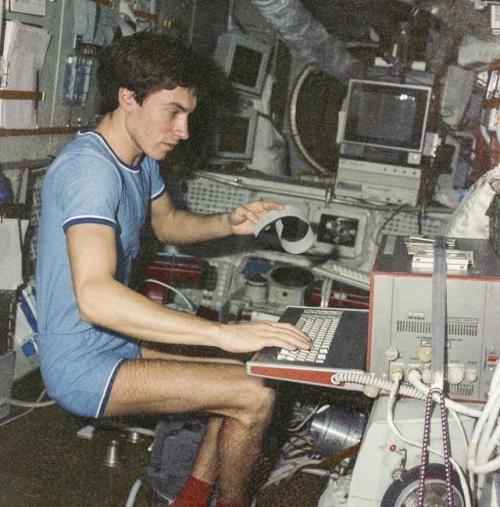
Soviet Cosmonaut Sergei Krikalev stuck in space during the collapse of the Soviet Union in 1991
Unable to return home, he ended up having to stay in space until further notice.
The cosmonaut eventually returned back to earth on March 25, 1992, after 10 months in orbit - to a nation that was very different to what it was when he had left. The Soviet Union had fractured into 15 nations, presidents had changed, and even his hometown of Leningrad had become St. Petersburg.
Interestingly, at the time, Krikalev was supposed to serve in the military reserves, and was almost issued a warrant for desertion – before the army realised that their reserve soldier was not even on the planet.

Did you know that some observatories are not on the ground and not orbiting Earth, but are mounted on airplanes? I finally researched SOFIA, an infrared observatory in a repurposed plane, and discovered there’s a rich history of airborne astronomy. And by airborne astronomy, I mean a lot of people took pictures of astronomical phenomena from planes!
Below the cut, I have the glossary, transcript, sources, and music credits. If you have suggestions for topics I could cover, please send me a Tumblr message or tweet at me on Twitter at @HDandtheVoid, or you can ask me to my face if you know me. Please subscribe on iTunes, rate my podcast and maybe review it, and tell friends if you think they’d like to hear it!
(My thoughts on the next episode are Chuck Yeager, Stephen Hawking and his theories, the opposition of Mars, famous comets, recent developments and discoveries in the astronomer community, or an atmospheric phenomenon called ‘Steve.’ The next episode will go up April 30th, lord willing and the creek don’t rise!)
Glossary
absorption bands - the areas of the electromagnetic spectrum that are absorbed by atmospheric gases.
atmospheric windows - the areas of the electromagnetic spectrum where the atmosphere is transparent, or does not absorb the radiation of specific wavelengths.
corona - the hot outer atmosphere of the Sun.
electromagnetic spectrum - the range of wavelengths or frequencies over which electromagnetic radiation extends. A photon transmits electromagnetic radiation at different frequencies, which are in a range that includes (from highest frequency to lowest) gamma rays, X-rays, ultraviolet light, visible light, infrared, microwaves, and radio waves
frequency - the number of times a wave oscillates up and down per second.
hypoxia - insufficient oxygen in the blood. Symptoms include vertigo, nausea, weakness, hyperventilation, slowed thinking, poor coordination, dimmed vision, and increased heart rate.
photon - a type of elementary particle that moves in a wave. It transmits electromagnetic radition such as light. The more energy a photon has, the higher its frequency.
Script/Transcript
Sources
A map of every active satellite orbiting Earth via Quartz
Infrared radiation via Gemini Observatory (Feb 1999)
Absorption Bands and Atmospheric Windows via NASA
Gladys Ingle of the 13 BLACK CATS changes planes in mid-air via YouTube
Milestones in Airborne Astronomy: From the 1920's to the Present by Wendy Whiting Dolci (1997)
Limits to human performance: elevated risks on high mountains, by Huey, Raymond B. and Xavier Eguskitza. Journal of Experimental Biology (2001)
When Humans Fly High by Linda Pendleton (Nov 1999)
Dalton's Law tells us that the total pressure of any mixture of gases (with constant temperature and volume) is the sum of the individual pressures (also called partial pressure) of each gas in the mixture. Also, partial pressure of each gas is proportional to that gas's percentage of the total mixture. Because the percentage of oxygen in the atmosphere remains constant at 21%, Dalton's Law lets us calculate the partial pressure of the oxygen in the atmosphere at any altitude. As we'll see shortly, the human body is affected by the pressure of the gases in the atmosphere. The partial pressure of oxygen (and to a lesser extent other gases) available in the surrounding air is important in determining the onset and severity of hypoxia.
Henry's Law states that the amount of gas dissolved in a solution is proportional to the partial pressure of the gas over the solution. A bottle of carbonated liquid demonstrates Henry's Law. When the bottle is uncapped, the carbon dioxide (CO2) in the mixture will slowly diffuse to the atmosphere until the pressure of CO2 in the liquid equals the pressure of CO2 in the surrounding air. The soda will then be "flat." A bottle of soda opened in an unpressurized aircraft at 10,000 feet will foam and overflow. The opposite will happen with soda opened at pressures greater than one atmosphere. A champagne cork won't pop in a diving bathysphere pressurized for deep ocean exploration.
Boyle's Law states that the volume of a gas is inversely proportional to the pressure on the gas as long as the temperature remains constant. A gas will expand when the pressure on it is decreased. This law holds true for all gases, even those trapped in body cavities. A volume of gas at sea level pressure will expand to approximately twice its original volume at 18,000 feet, nearly nine times its original volume at 50,000 feet.
Graham's Law tells us that a gas at higher pressure exerts a force toward a region of lower pressure. There's a permeable or semi-permeable membrane separating the gases, and gas will diffuse across the membrane from the higher pressure to the lower pressure. This will continue until the pressure of the gas is equal, or nearly equal, on both sides of the membrane. Graham's Law is true for all gases and each gas in a mixture behaves independently. It's possible to have two or more gases in a solution diffusing in opposite directions across the same membrane and, in fact, this is what happens to make oxygen transfer possible in the cells and tissues of the human body.
High-Altitude Hypoxia via Harvard (July 2012)
Kuiper Airborne Observatory via NASA (May 2005)
NASA's Kuiper Airborne Observatory via YouTube
SOFIA Science Center
Up all Night with SOFIA, NASA's Flying Observatory via YouTube
Intro Music: ‘Better Times Will Come’ by No Luck Club off their album Prosperity
Filler Music: ‘A Bite Out of My Bed’ by The New Pornographers off their album Together.
Outro Music: ‘Fields of Russia’ by Mutefish off their album On Draught
It’s international dark sky week! Please enjoy this great Bortle scale.
skyglowproject What sky do you live under? Learn more at SKYGLOWPROJECT.COM

ASTROGENOUS
[adjective]
producing or creating stars.
Etymology: from Greek, from astron “star” + -genēs “born”.
[J. R. Slattum - Star Maker]

Where to look, and when.
A podcast project to fill the space in my heart and my time that used to be filled with academic research. In 2018, that space gets filled with... MORE SPACE! Cheerfully researched, painstakingly edited, informal as hell, definitely worth everyone's time.
243 posts

